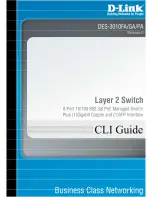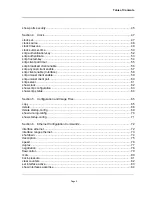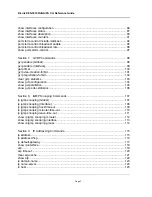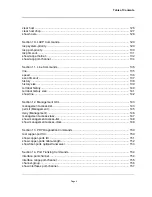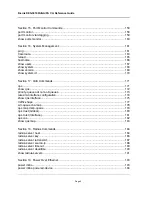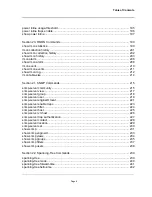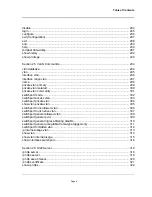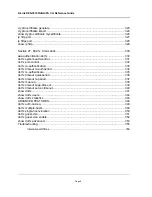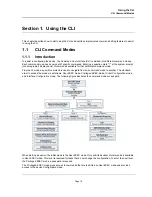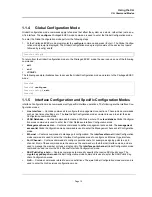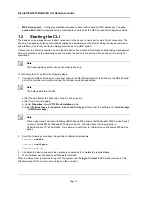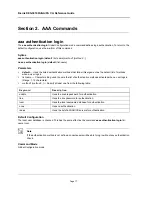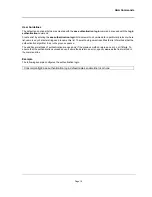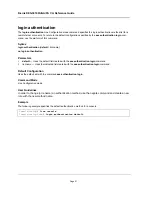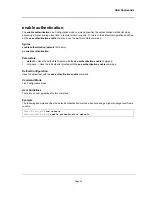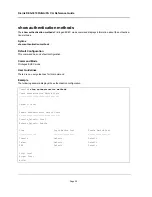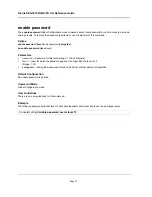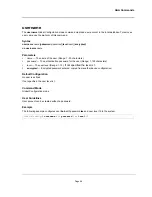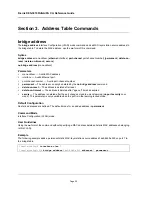
Using the CLI
Editing Features
Page 14
1.3
Editing Features
1.3.1
Entering Commands
A CLI command is a series of keywords and arguments. Keywords identify a command, and arguments specify
configuration parameters. For example, in the command
show interfaces status ethernet 8
,
show
,
interfaces
and
status
are keywords,
ethernet
is an argument that specifies the interface type, and
8
specifies the port.
To enter commands that require parameters, enter the required parameters after the command keyword. For
example, to set a password for the administrator, enter:
Console(config)#
username
admin
password
smith
When working with the CLI, the command options are not displayed. The command is not selected from a menu,
but is manually entered. To see what commands are available in each mode or within an interface configuration,
the CLI does provide a method of displaying the available commands, the command syntax requirements and in
some instances parameters required to complete the command. The standard command to request help is
?
.
There are two instances where help information can be displayed:
•
Keyword lookup
— The character
?
is entered in place of a command. A list of all valid commands and cor-
responding help messages are is displayed.
•
Partial keyword lookup
— If a command is incomplete and or the character
?
is entered in place of a
parameter. The matched keyword or parameters for this command are displayed.
To assist in using the CLI, there is an assortment of editing features. The following features are described:
•
Terminal Command Buffer
•
Command Completion
•
Keyboard Shortcuts
1.3.1.1
Terminal Command Buffer
Every time a command is entered in the CLI, it is recorded on an internally managed Command History buffer.
Commands stored in the buffer are maintained on a
First In First Out (FIFO)
basis. These commands can be
recalled, reviewed, modified, and reissued. This buffer is not preserved across device resets.
By default, the history buffer system is enabled, but it can be disabled at any time. For information about the com-
mand syntax to enable or disable the history buffer, see
history
.
There is a standard default number of commands that are stored in the buffer. The standard number of 10 com-
mands can be increased to 216. By configuring 0, the effect is the same as disabling the history buffer system. For
information about the command syntax for configuring the command history buffer, see
history size
.
To display the history buffer, see
show history
.
Keyword
Description
Up-arrow key
Ctrl+P
Recalls commands in the history buffer, beginning with the most recent com-
mand. Repeats the key sequence to recall successively older commands.
Down-arrow key
Returns to more recent commands in the history buffer after recalling com-
mands with the up-arrow key. Repeating the key sequence will recall succes-
sively more recent commands.
Summary of Contents for DES-3010FA
Page 1: ......
Page 91: ...Ethernet Configuration Commands Page 90 ch2 ch3 ch4 ch5 ch6 ...
Page 193: ...Radius Commands Page 192 ...
Page 318: ...D Link DES 3010FA GA PA CLI Reference Guide Page 317 ...
Page 361: ...International Offices Page 360 ...

